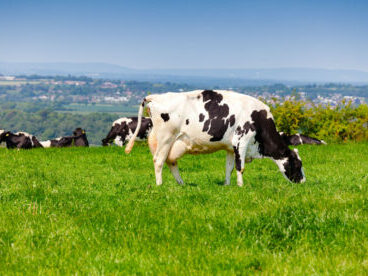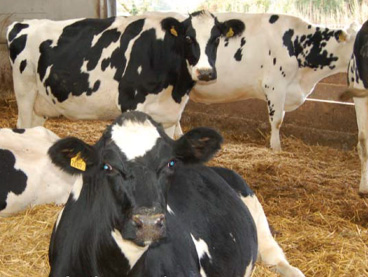UFAC-UKs David Bonsall advises keeping a close watch for the signs of Sub-Acute Ruminal Acidosis (SARA) this winter to maximise performance and margins.
Don’t let SARA drain performance
UFAC-UKs David Bonsall advises keeping a close watch for the signs of Sub-Acute Ruminal Acidosis (SARA) this winter to maximise performance and margins.
SARA is an insidious condition which affects a significant number of herds. The signs of SARA include irregular feeding patterns, a proportion of the herd scouring, undigested feed particles in the dung and dirty cows.
It occurs when the buffering capacity of the rumen is overwhelmed by the production of VFAs, commonly due to excess rapidly fermentable carbohydrates in the diet, leading to a fall in pH. The economic consequences include reduced dry matter intakes and a decline in fibre digestion of up to 25%, both of which reduce nutrient supply and lead to poorer production and cow health.
There is no cure other than good management and taking preventative measures. Ensure the TMR is well mixed to prevent sorting. Provide adequate trough space so cows can eat regularly. Avoid slug feeding of concentrates which can precipitate a pH challenge.
When assessing the diet, looking at NDF levels alone is not sufficient. You must ensure it contains adequate structural effective fibre. Also avoid high levels of starch and sugars and monitor the concentrate:forage ratio of the diet. Watch rumen function closely as you need cows ruminating to produce sufficient natural buffers.
Key indicators are:
70% of cows cudding an hour after feeding
A cudding rate of 60 cuds per minute is ideal
A minimum rumen fill score of 3.5.
Glyco-Buf helps prevent risk
Many dairy farmers have managed the risk of SARA by adding UFAC Glyco-Buf to the diet. It is a unique nutritional buffering product which combines a rumen-friendly source of glucogenic energy to drive milk yield with a proven rumen buffer to optimise rumen performance, fibre digestion and dry matter intake.
It gives farmers the opportunity to increase energy content without compromising rumen performance and feed intakes. In farm trials, adding Glyco-Buf increased milk yields by 9% and forage intakes by 11% while reducing concentrate feed rates by 5.7%, thus leading to higher margins. Glyco- Buf is a flexible feed which can be incorporated in blends, added to a TMR or sprinkled down the feed trough.


 Back to News
Back to News 



